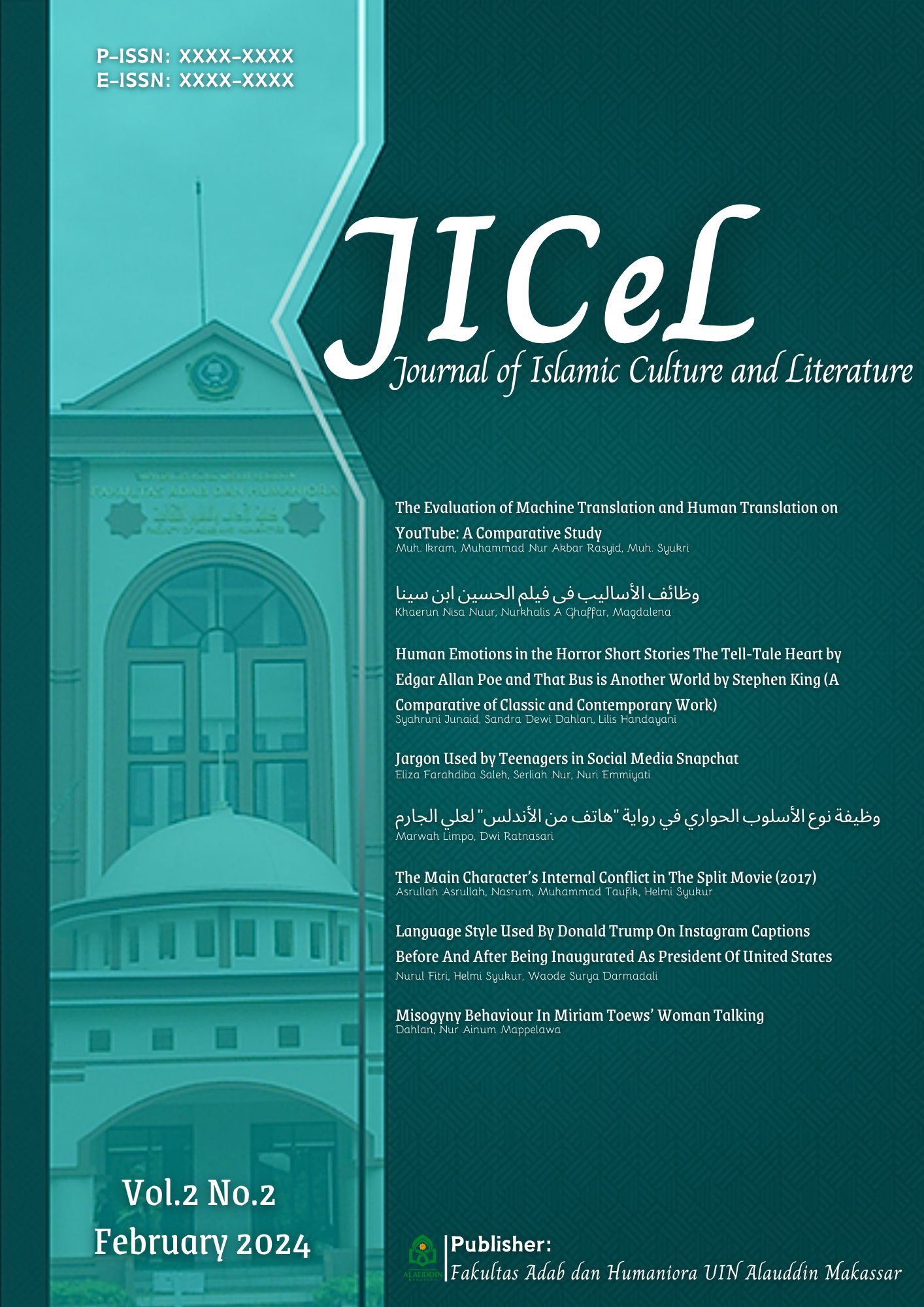Exploring Human Emotions in Classic and Contemporary Work: a Comparative Analysis of Poe's "The Tell-Tale Heart" and King's "That Bus Is Another World"
Exploring Human Emotions in Classic and Contemporary Work
Abstract
The aim of this research is to know how human emotion are presented by the authors in the horror short stories The Tell-Tale Heart by Edgar Allan Poe and That Bus is Another World by Stephen King as the classic and the contemporary works based on author psychology. This research used a descriptive qualitative method and used theory of human emotions by Smith (2015) to analyze the data. Then, the researcher connect it by the character dimension and make it strong based on supporting of secondary data. The result shows that there are different type of emotions that exist in both short stories based on the background of the authors at the time. The Tell-Tale Heart express the main emotion of hate to the eye of the old man as the capturing of Poe to the pain or dark things that he experienced during his life until this story was written. Meanwhile That Bus is Another World is more drawing the emotion of sympathy and panic as the capturing of King’s feeling and concern for the social environment at the time when he was in the heavy traffic jam. Besides that, there are also some emotions that still new or rarely talked about before that the authors present in their work, among of them irritation, dread, bafflement, compassion, and relief.
Keywords: emotions, author’s psychology, horror, classic, contemporary.
Authors who publish with this journal agree to the following terms:
1) Authors retain copyright and grant the journal right of first publication with the work simultaneously licensed under a Creative Commons Attribution License that allows others to share the work with an acknowledgement of the work's authorship and initial publication in this journal.
2) Authors are able to enter into separate, additional contractual arrangements for the non-exclusive distribution of the journal's published version of the work (e.g., post it to an institutional repository or publish it in a book), with an acknowledgement of its initial publication in this journal.
3)Authors are permitted and encouraged to post their work online (e.g., in institutional repositories or on their website) prior to and during the submission process, as it can lead to productive exchanges, as well as earlier and greater citation of published work (See The Effect of Open Access).

3.png) Scopus ID:
Scopus ID:_3.png) ORCHID ID:
ORCHID ID:
3.png) G-Scholar ID:
G-Scholar ID:
3.png) SINTA ID:
SINTA ID:

